Japanese interior design is an exquisite blend of tradition and modernity, characterized by its simplicity and natural materials.
We’ll showcase 15 remarkable tricks that bring the serene essence of Japan into your home, transforming your space into a tranquil sanctuary.
From minimalist aesthetics to harmonious color palettes, these design elements will inspire you to elevate your home decor game and embrace the beauty of simplicity.
Jaw-Dropping Japanese Interior Designs
1. Embrace Minimalism
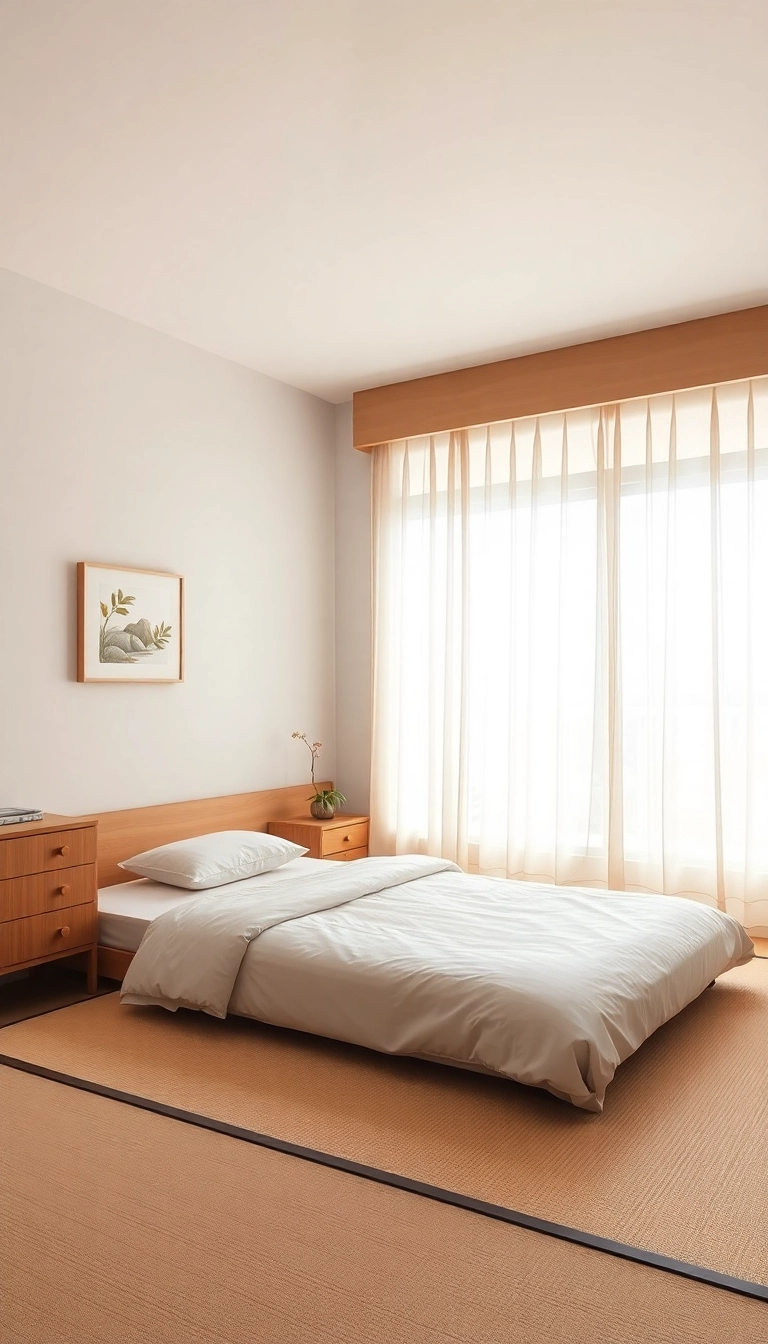
Minimalism is at the heart of Japanese interior design, promoting a clutter-free environment that fosters tranquility.
By removing excess items and focusing on essential furnishings, you create a calming space that encourages relaxation.
Incorporate multifunctional furniture to save space without compromising style, and opt for clean lines and neutral colors to enhance the sense of simplicity.
2. Incorporate Natural Materials
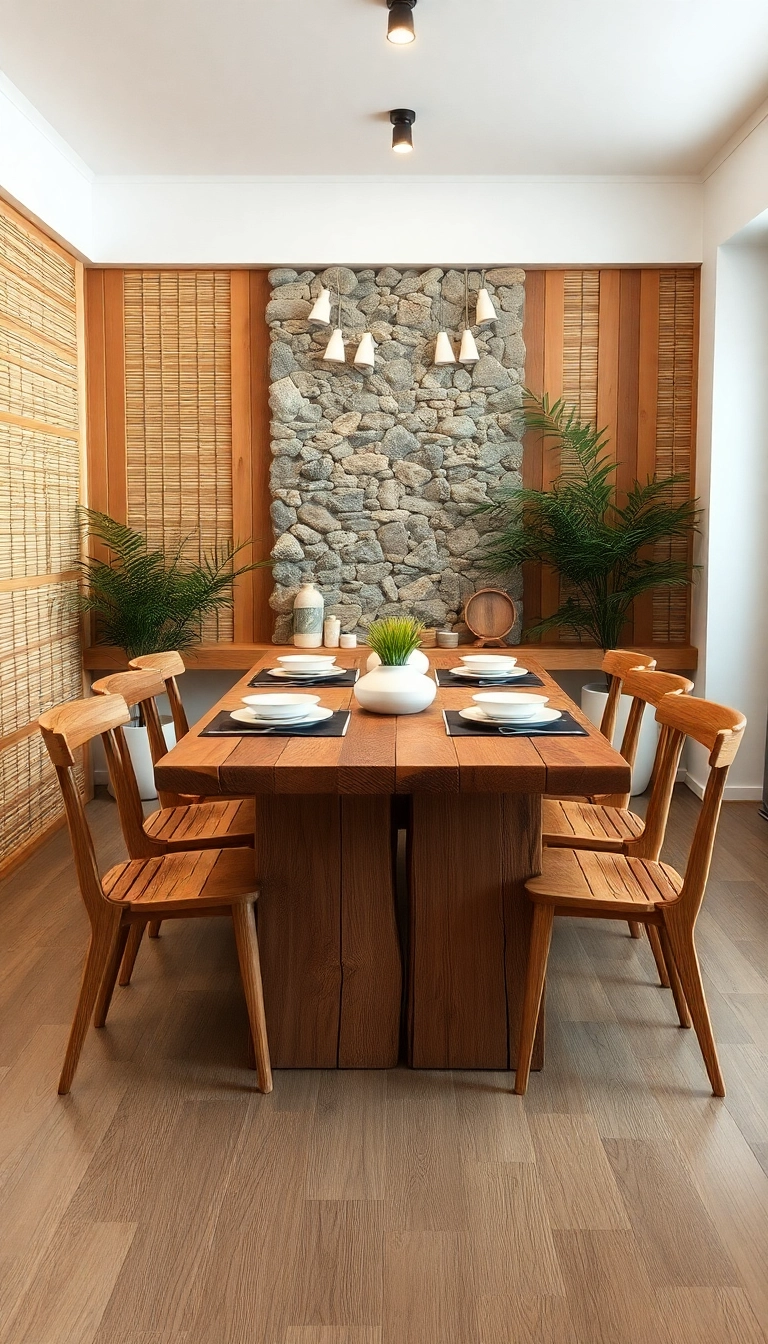
Natural materials play a crucial role in Japanese design, connecting the indoors with nature.
Use elements like bamboo, wood, and stone to create a warm and inviting atmosphere.
Consider wooden beams, bamboo accents, and stone features to add texture and depth to your space, ensuring that these materials are left in their natural state to maintain authenticity.
3. Use Soft, Natural Lighting
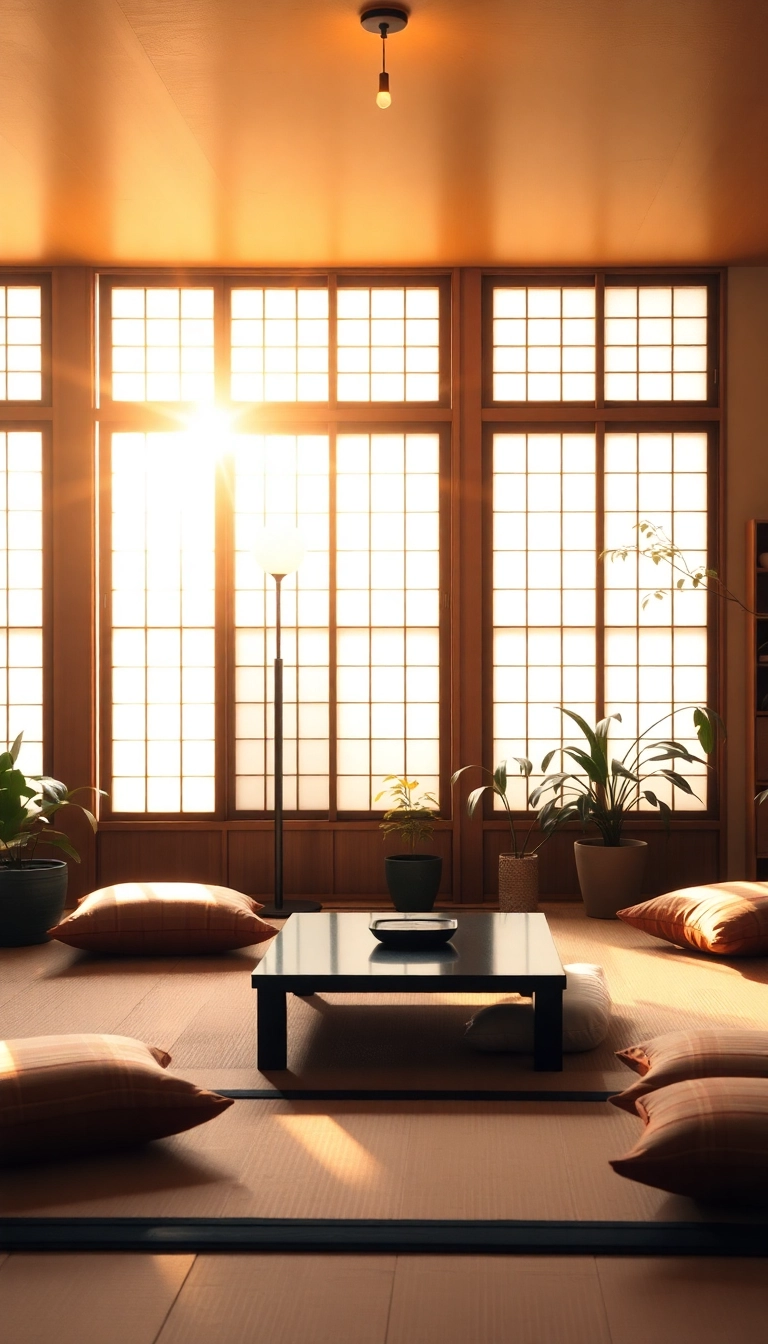
Lighting is essential in Japanese interior design, emphasizing soft, natural light that fosters a sense of peace.
Choose sheer curtains or paper screens to diffuse sunlight, creating a warm glow throughout the room.
Table and floor lamps with warm-toned bulbs to enhance the inviting atmosphere during the evening hours.
4. Create Zen Spaces
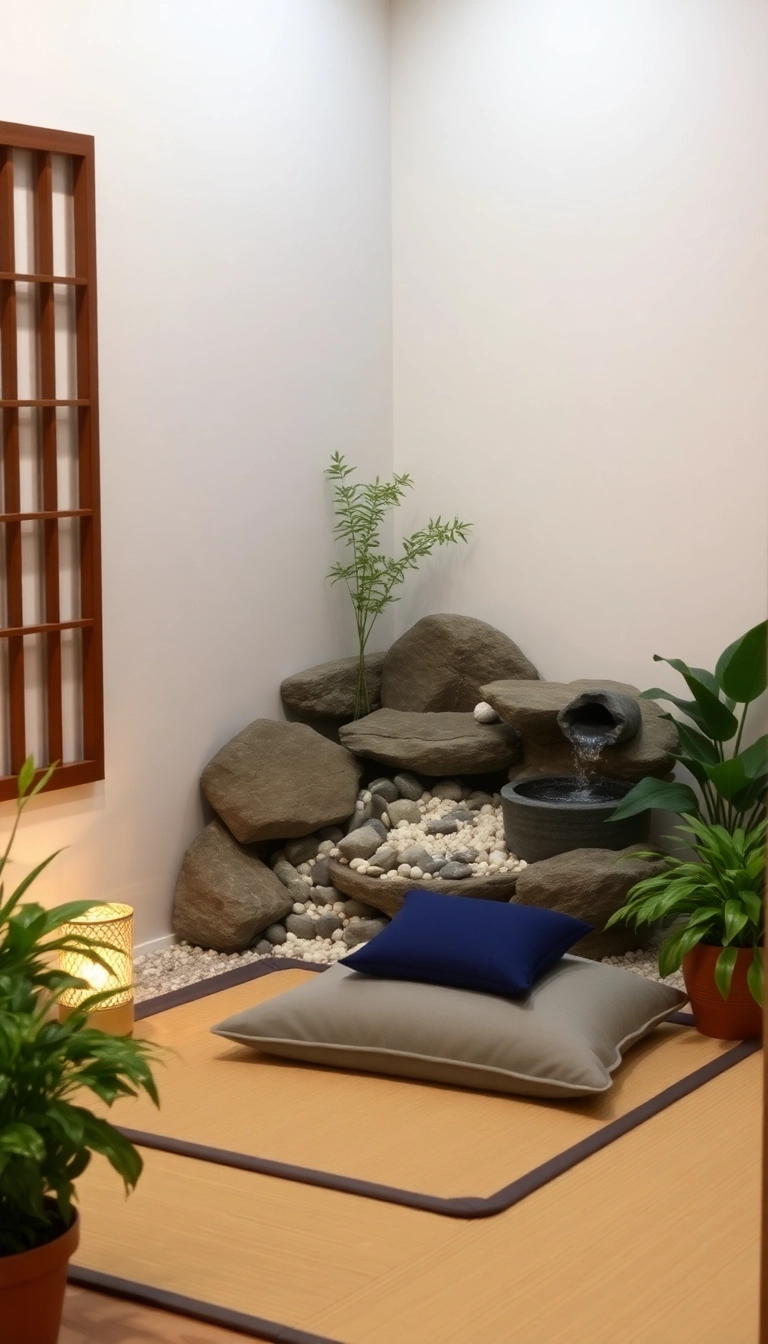
A Zen-inspired space promotes relaxation and mindfulness, essential elements of Japanese culture.
Designate a quiet corner in your home for meditation or reading, using natural materials and calming colors to create a sense of serenity.
Add elements like a small water feature, rocks, and greenery to enhance the connection with nature.
5. Integrate Sliding Doors
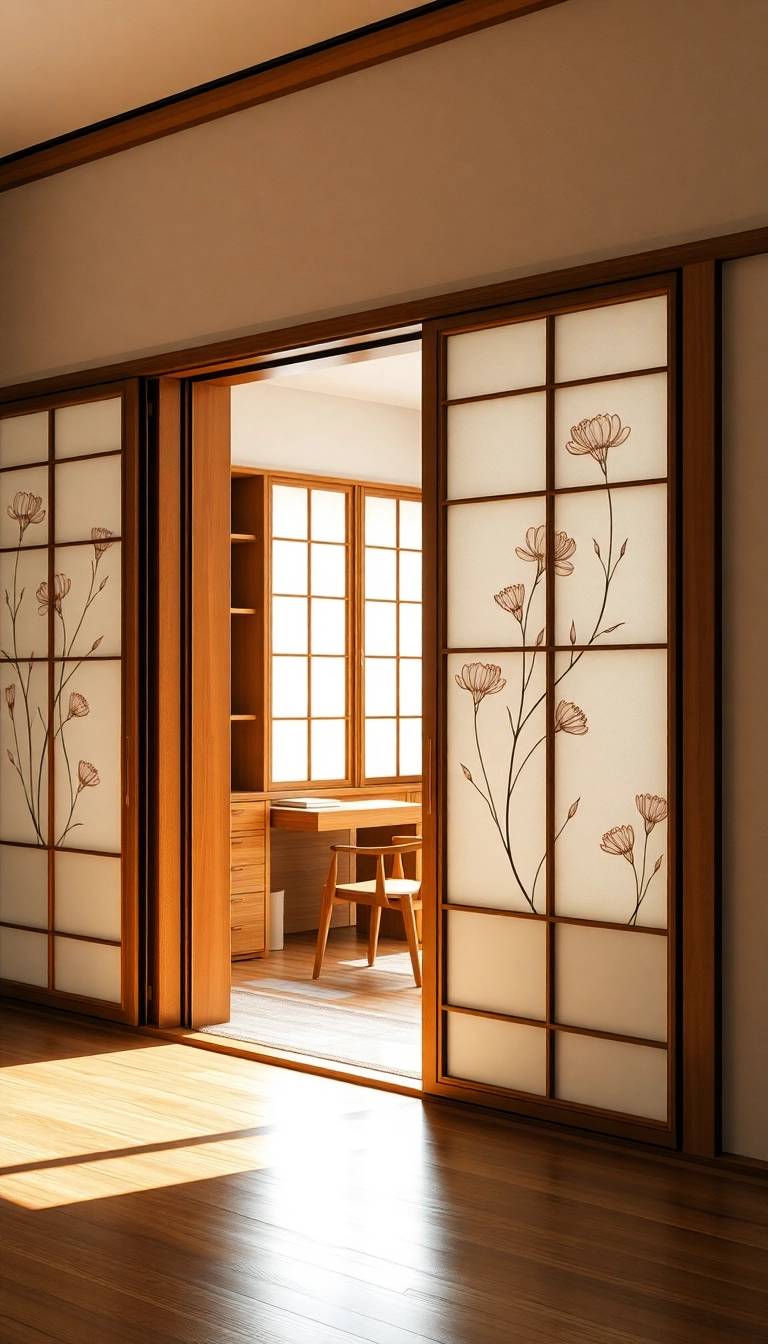
Sliding doors, or fusuma, are a hallmark of Japanese architecture, adding versatility and elegance to your interiors.
These doors allow for fluid transitions between spaces, creating an open feel when needed.
Choose designs that feature traditional artwork or simple patterns to maintain the aesthetic while providing functionality.
6. Balance with Asymmetry
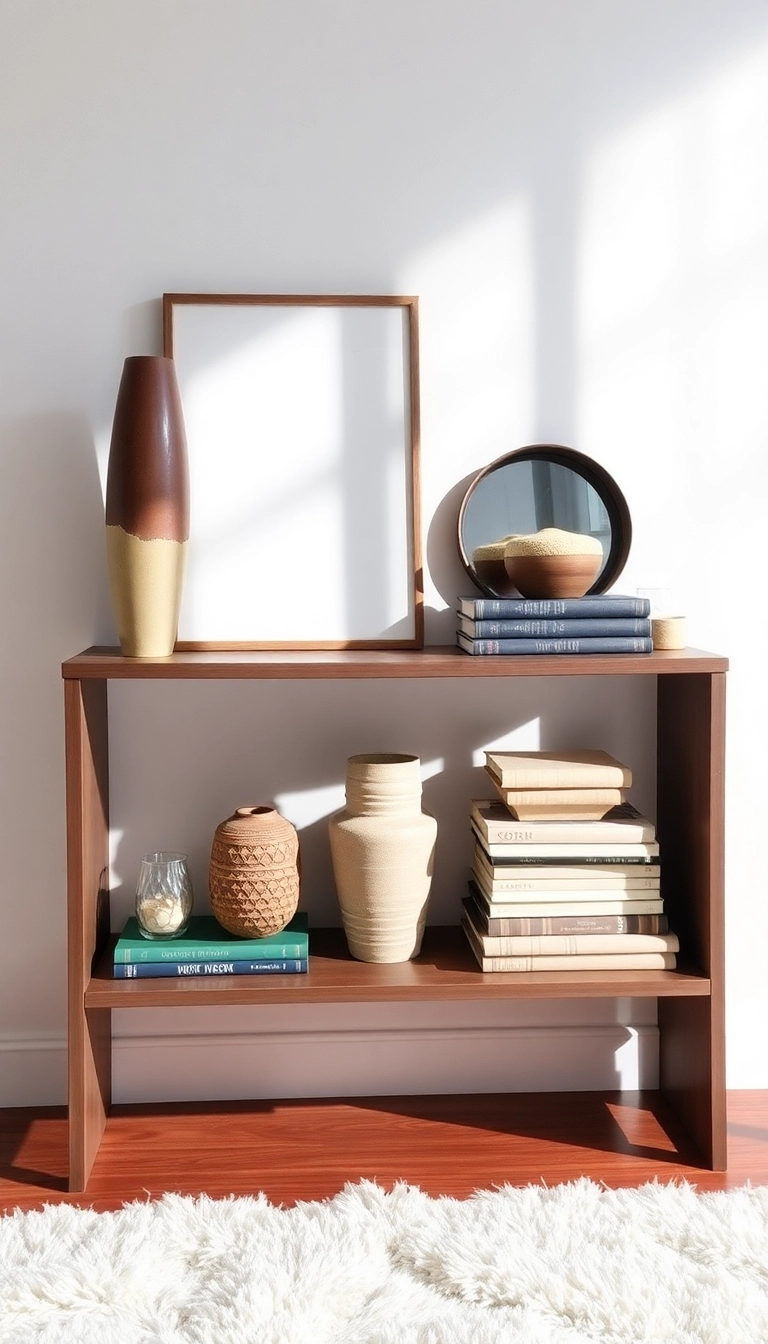
Japanese design often embraces asymmetry, creating visual interest without overwhelming the senses.
A mix of decor items that vary in size and shape, arranging them in an organic manner.
This balance allows for a dynamic yet harmonious look that captures the essence of nature, where no two elements are identical.
7. Choose Earthy Color Palettes
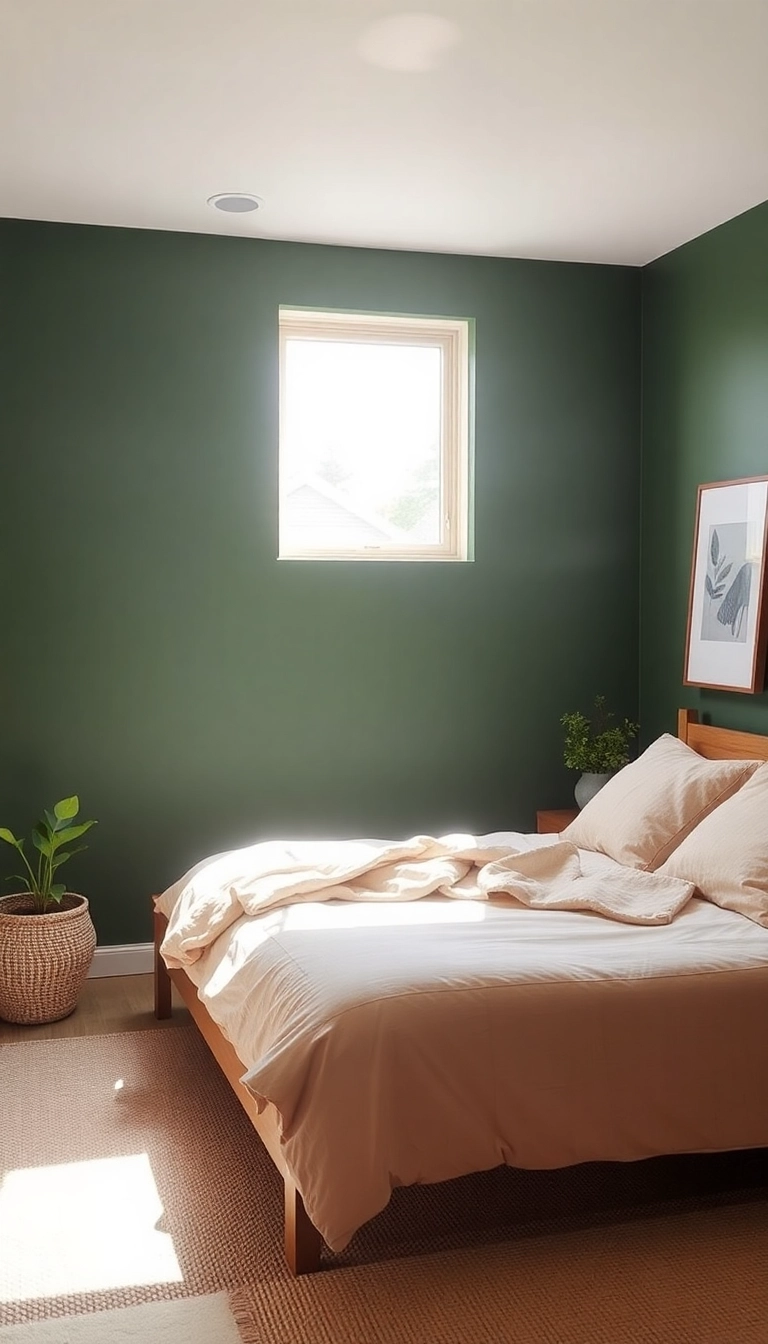
Earthy tones are a staple in Japanese interior design, reflecting the natural landscapes found throughout Japan.
Opt for colors like deep greens, browns, and soft beiges to create a grounded atmosphere.
These hues foster a sense of calm and connection to nature, making your home feel inviting and serene.
8. Incorporate Functional Art
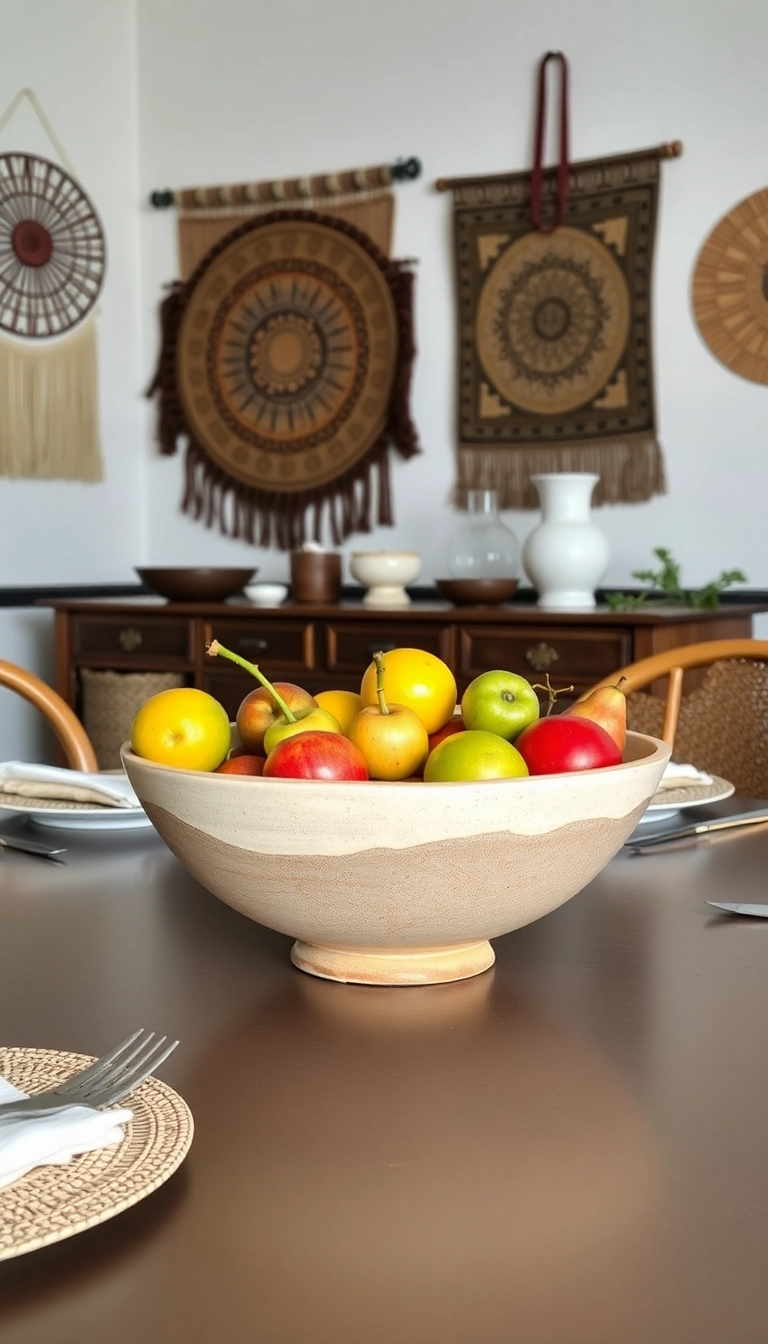
Art in Japanese interiors often serves a dual purpose, being both beautiful and functional.
Choose items like decorative bowls, wall hangings, or sculptures that enhance your decor while serving a practical function.
This approach not only elevates your design but also reflects the Japanese philosophy of finding beauty in utility.
9. Add Indoor Plants
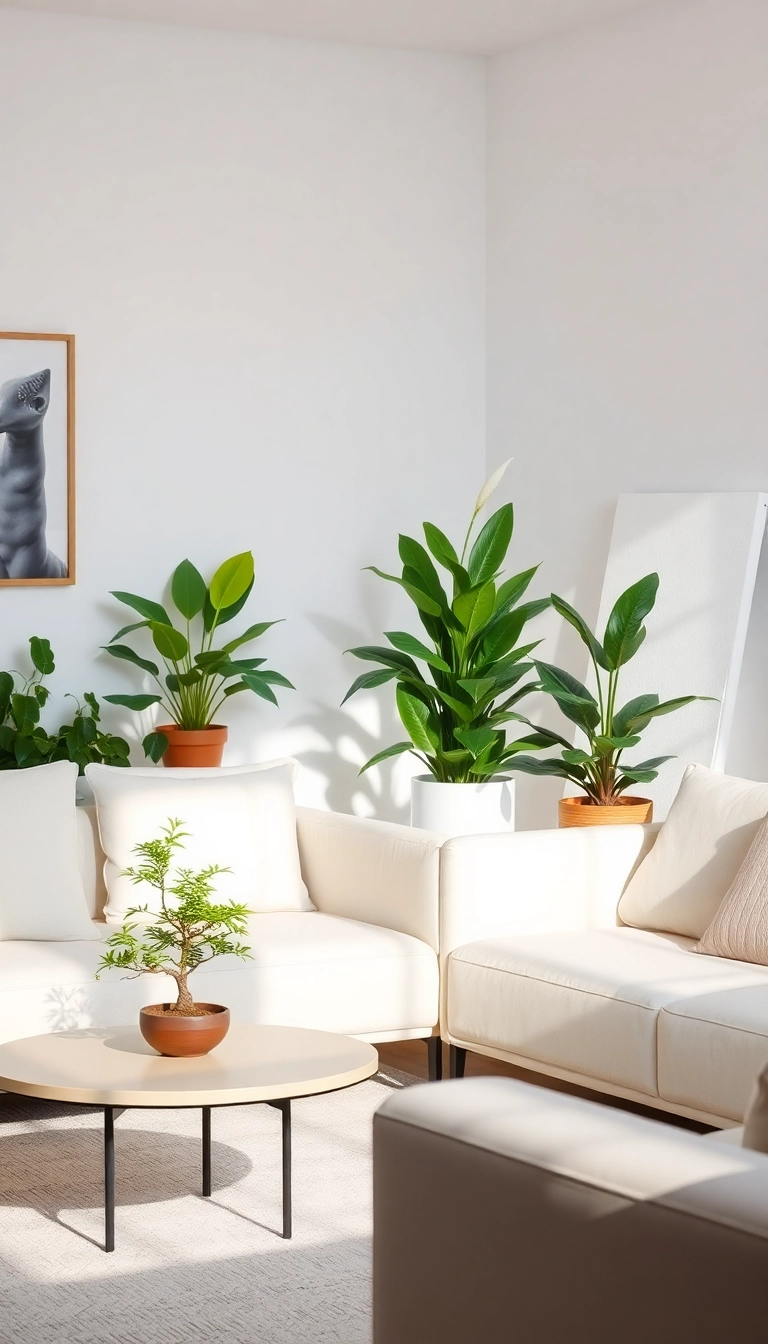
Indoor plants are essential in Japanese interior design, adding life and a connection to nature.
Choose plants that are easy to care for, such as bonsai trees or peace lilies, to enhance the tranquility of your home.
Place them strategically to create focal points and improve air quality, making your space feel fresh and vibrant.
10. Focus on Textures
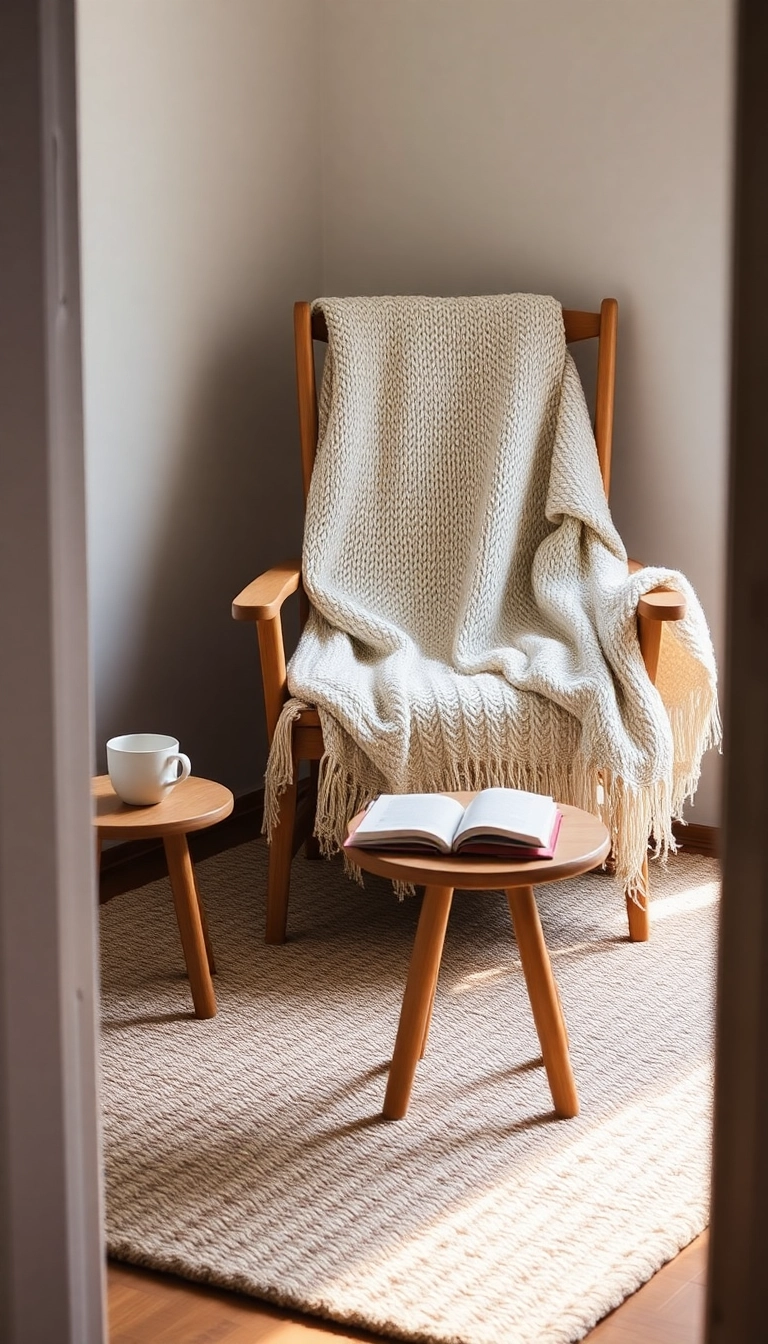
Texture plays a vital role in Japanese design, adding depth and interest to a space.
Incorporate a variety of materials, such as woven textiles, smooth ceramics, and rustic wood, to create a tactile experience.
Layering textures can evoke feelings of warmth and comfort, making your home an inviting retreat.
11. Utilize Open Spaces
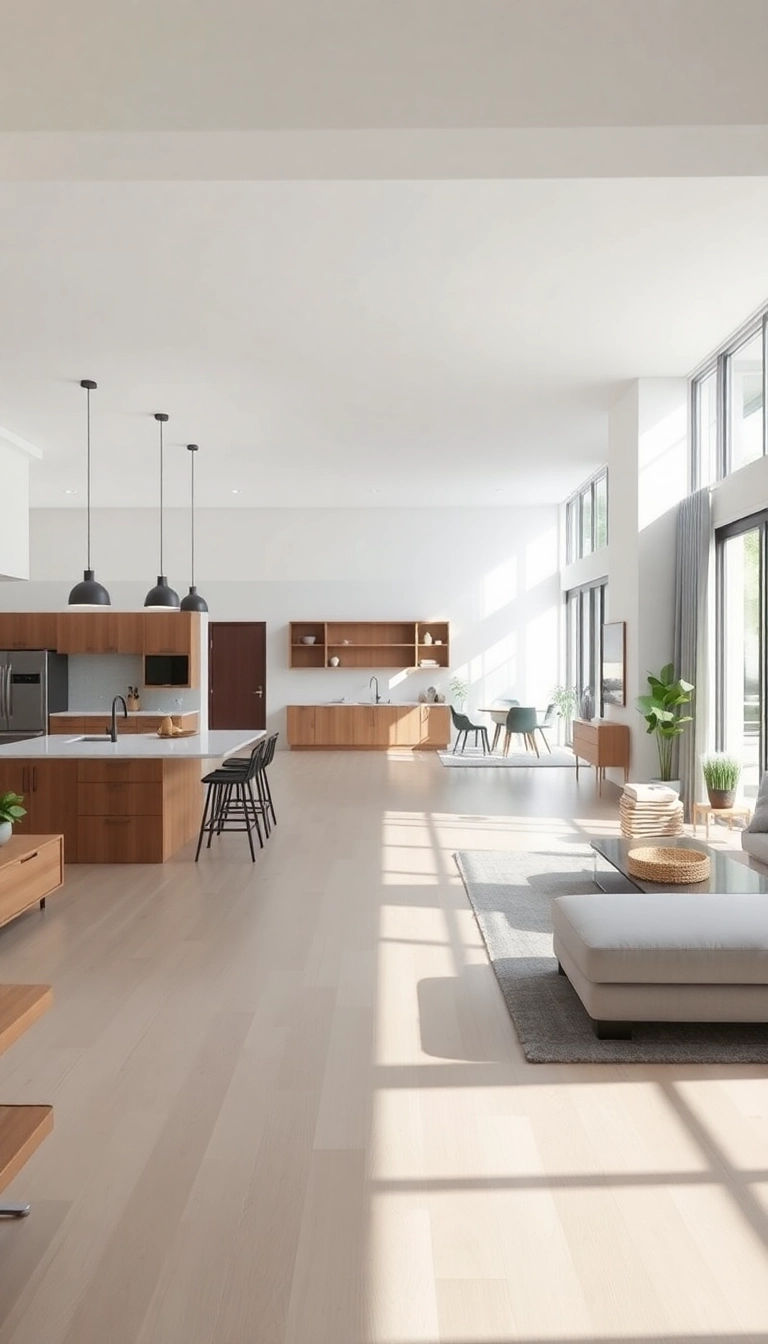
Open spaces are fundamental in Japanese design, promoting a sense of freedom and flow.
Avoid overcrowding your rooms with furniture; instead, choose pieces that invite movement and interaction.
Creating clear pathways and maintaining visual connections between rooms enhances the overall harmony of your home.
12. Incorporate Japanese Patterns
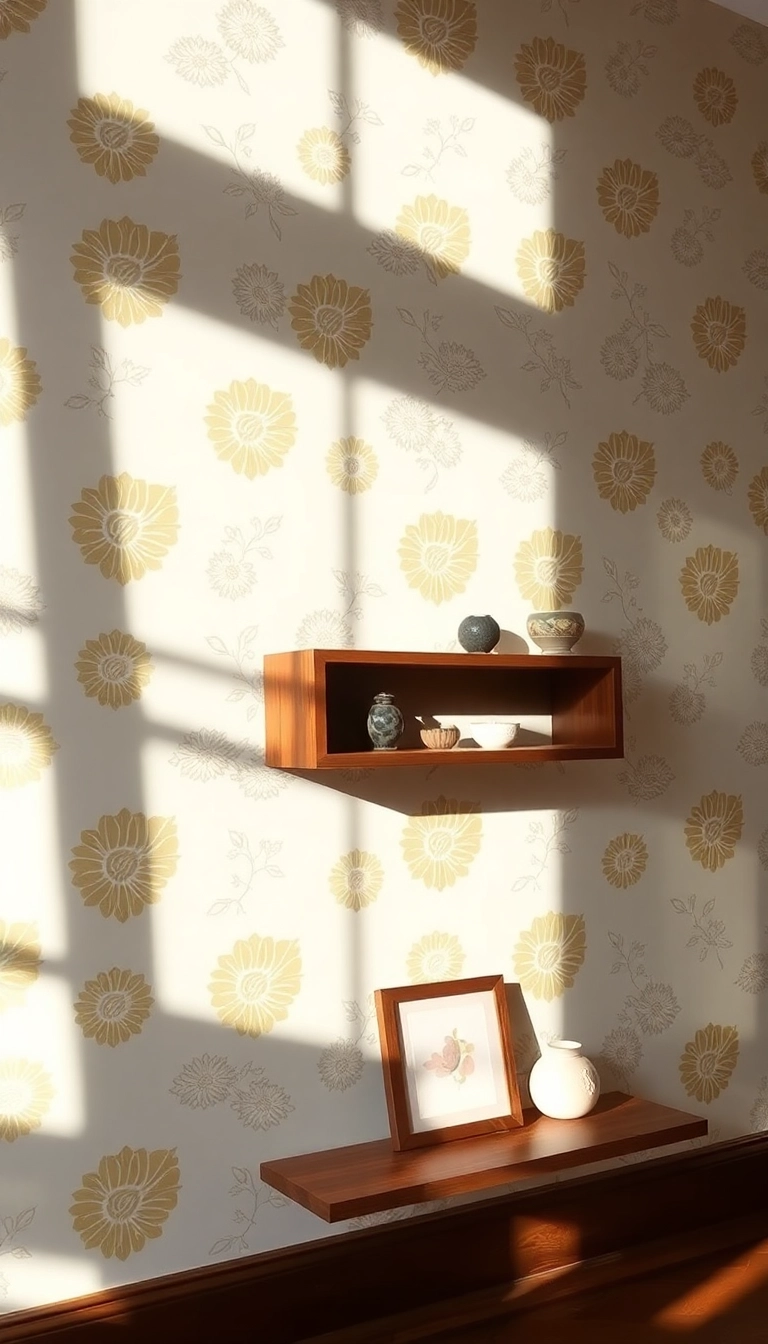
Japanese patterns, such as Asanoha and Seigaiha, add a touch of cultural authenticity to your decor.
Use these designs in textiles, wallpapers, or artwork to infuse your home with character and history.
The intricate patterns can serve as focal points while maintaining the overall simplicity of your design.
13. Create a Focal Point
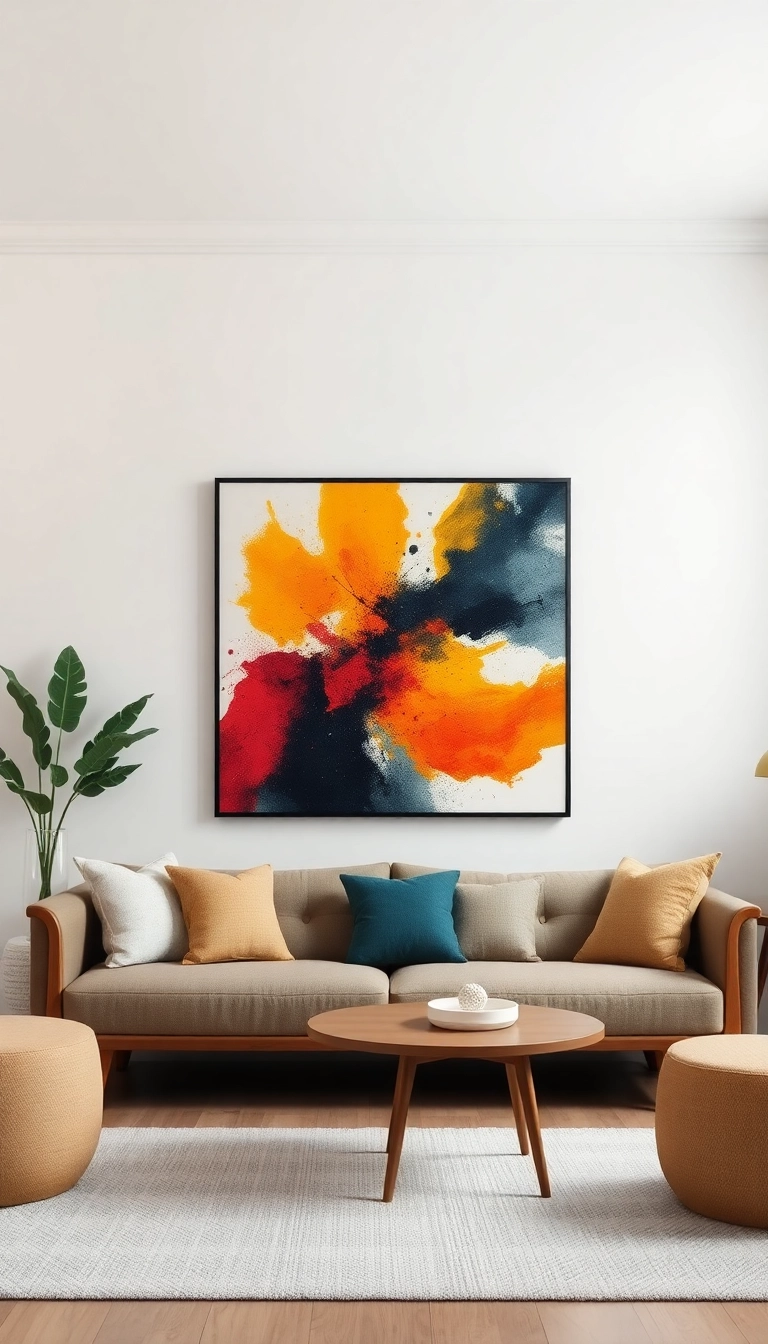
Every room benefits from a focal point that draws the eye and adds interest.
This could be a striking piece of art, an elegant light fixture, or a beautifully arranged flower display.
Ensure that your focal point aligns with the overall design aesthetic, enhancing the serenity and balance of the space.
14. Incorporate Outdoor Elements

Bringing the outdoors inside is a key principle of Japanese design, creating a seamless connection between nature and your home.
Consider large windows or sliding doors that open to a garden, allowing for a fluid transition between spaces.
Use natural stones, plants, and water features indoors to enhance this connection and create a tranquil environment.
15. Personalize with Meaningful Decor
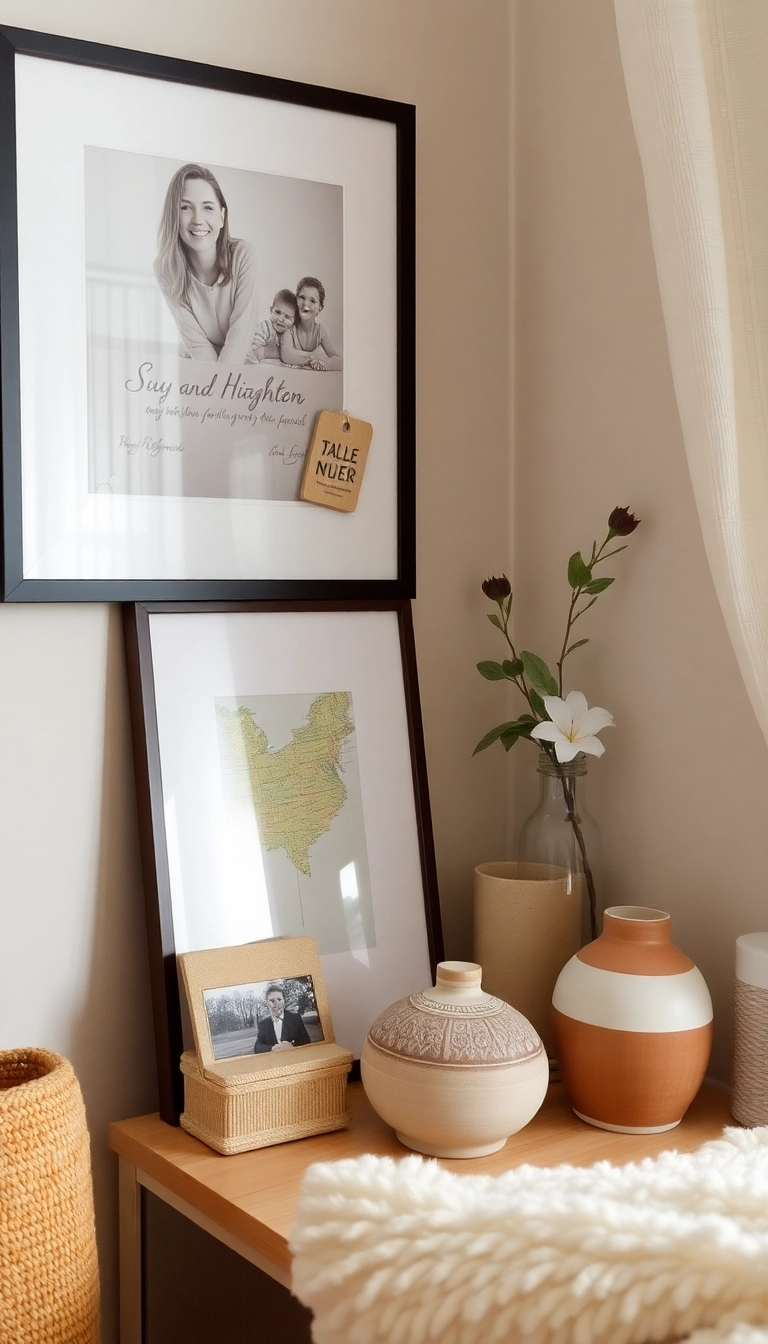
Incorporate decor that holds personal significance to you, reflecting your journey and experiences.
This could include family heirlooms, travel souvenirs, or art pieces that resonate with your story.
Balancing personal touches with the overall simplicity of Japanese design ensures that your home feels both unique and harmonious.
Aesthetic Japanese Rooms
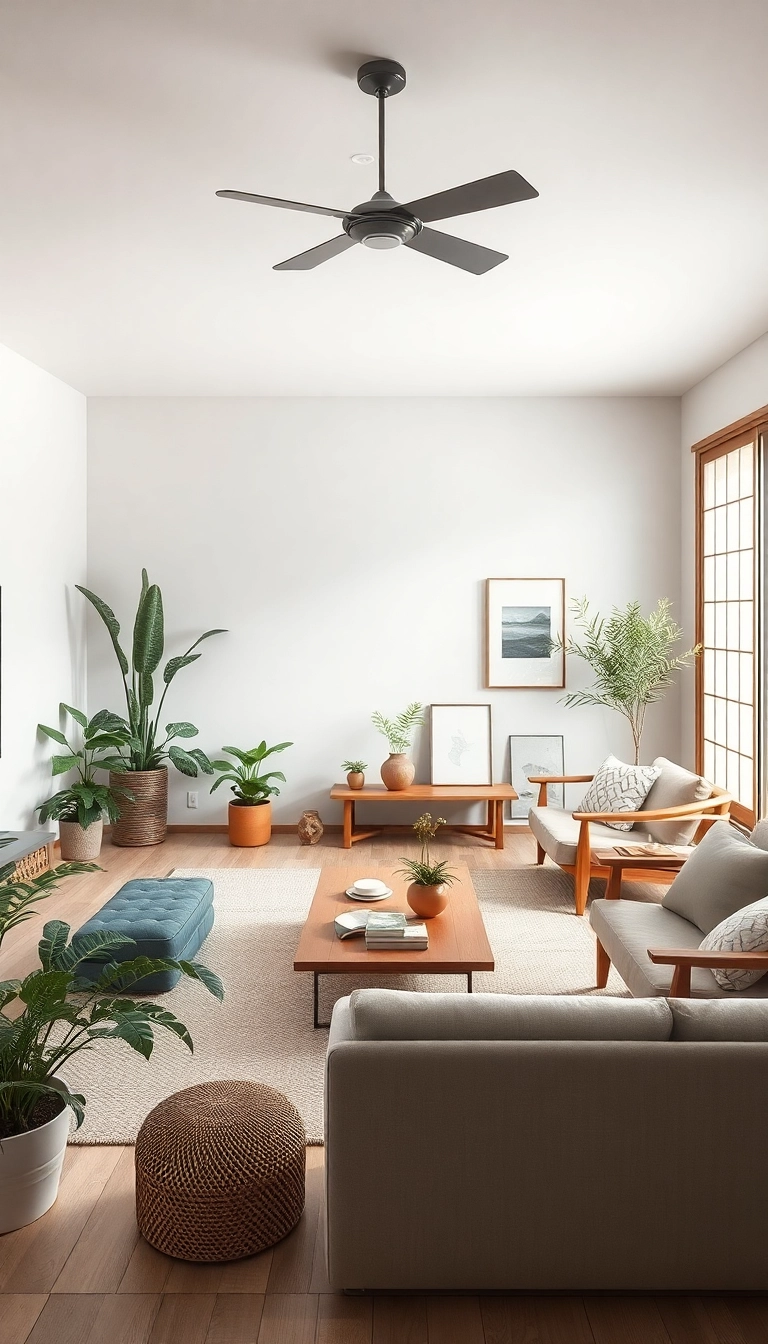
Japanese interior design offers a unique blend of simplicity and elegance, transforming your home into a peaceful haven.
By incorporating these 15 tricks, you can elevate your decor game while embracing the beauty of natural materials and minimalist aesthetics.
Start your journey towards a serene living space inspired by the rich traditions of Japan.
FAQ
What are the key features of Japanese interior design?
Japanese interiors focus on simplicity, natural materials, and a connection to nature. Features often include sliding shoji screens, tatami mats, and low furniture, creating a calm and functional space.
How can I incorporate Japanese design elements into a modern home?
Start by using neutral colors, natural wood, and stone accents. Add minimalist furniture, houseplants like bonsai or bamboo, and lighting that mimics natural light to blend modern living with traditional Japanese aesthetics.
What is the role of nature in Japanese interior design?
Nature is central to Japanese design, symbolizing harmony and tranquility. Indoor plants, natural wood, and elements like water or stone are used to create a seamless connection between the indoors and the natural world.
